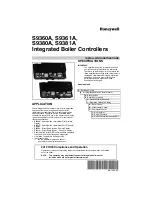
27
4.8 Flue connections
In order to ensure that the appliance functions
correctly and ef
fi
ciently, the
fl
ue connection
between the boiler and the
fl
ue terminal must
be made using original components speci
fi
-
cally designed for condensing boilers.
Traditional
fl
ue components cannot be used
for conveying exhaust fumes from condensing
boilers, nor vice versa.
●
It is recommended that:
- for the exhaust discharge duct, the entire length of the
fl
ue slopes upwards towards the exterior in order to
facilitate the
fl
ow of condensate back to the combus-
tion chamber, which has been speci
fi
cally designed to
collect and drain the acidic condensate;
- for the air intake, the entire length of the duct slopes
upwards towards the boiler to prevent the entry of
rainwater, dust or foreign bodies into the pipe;
- in case of a vertical
fl
ue pipe installation, a conden-
sate trap is
fi
tted at the base of the
fl
ue installation and
connected into drainage system (see
fi
g. 8);
●
In the case where a horizontal coaxial system is in-
stalled, the coaxial terminal must be positioned hori-
zontally in that the exhaust duct has been speci
fi
cal-
ly designed with the required slope (Ø60) and the air
intake (Ø100) has been suitably protected against
the weather;
Flue Duct connection
Connect the
fl
ue to the chimney according to the follow-
ing speci
fi
cation:
●
Do not allow the exhaust
fl
ue to protrude inside the chimney; instead terminate it before it reaches the
fl
ue
duct;
●
The exhaust
fl
ue must be perpendicular to the opposite wall of the
fl
ue duct (see
fi
g. 9).
Fig. 1
FLUE DUCT
YES
Fig. 2
8
9
















































